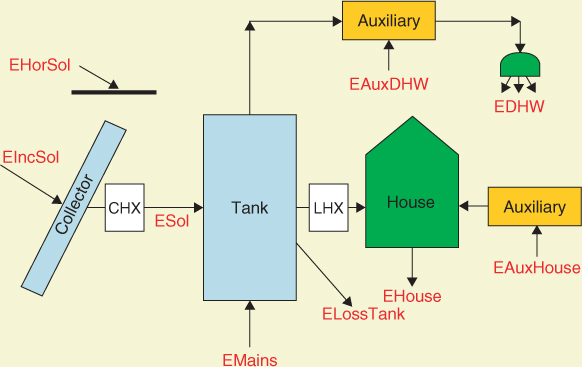Introduction
CombiSys is a special version of the system simulation program TRNSYS (pronounced tran-sis and discussed in Chapter 19) and can be downloaded for free from the Wiley website (http://www.wiley.com/go/solarengineering4e). The early paragraphs of Appendix A (Problems) provide instructions for downloading, installing, and running TRNSYS on your Windows computer. This program simulates a solar “CombiSystem” that supplies heat for both a house heating system and a domestic hot-water system. A diagram of the energy flows in a solar CombiSystem is shown below.

The system has the following major components:
The weather data comes from the TMY2 data set (Second version of the U.S. Typical Meteorological Year) and consists of 329 built-in U.S. weather stations. Additional data can be added; Problem S2.2 is concerned with adding new data. The data consists of hourly ambient temperatures and hourly beam (directly from the sun) radiation and diffuse (scattered) radiation both incident on a horizontal surface (EHorSol). A radiation processor converts this horizontal data into incident radiation on the plane of the collectors (EIncSol).
The collector is either a flat-plate liquid heater with one glass cover, similar to those shown in Figures 6.1.1 and 6.3.1, or an evacuated tube collector, similar to those shown in Figures 6.13(d)–(f). The collectors are mounted on the building [in ...
Get Solar Engineering of Thermal Processes, 4th Edition now with the O’Reilly learning platform.
O’Reilly members experience books, live events, courses curated by job role, and more from O’Reilly and nearly 200 top publishers.

